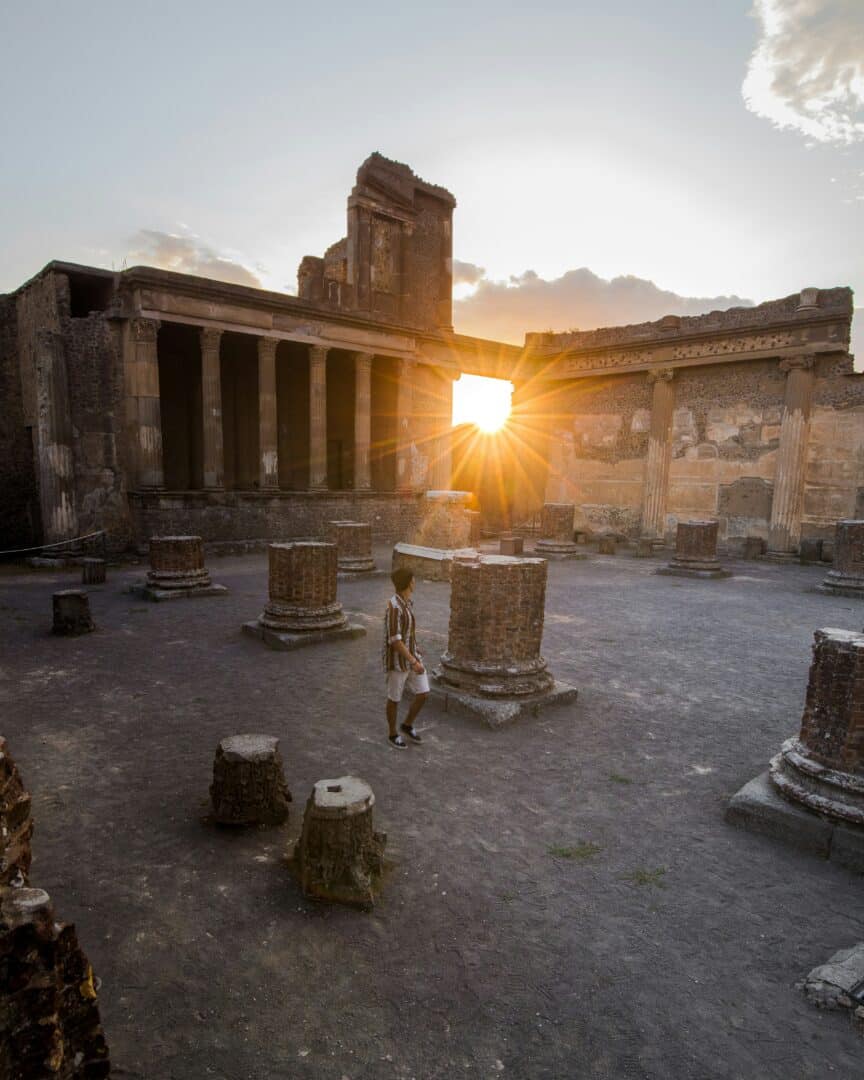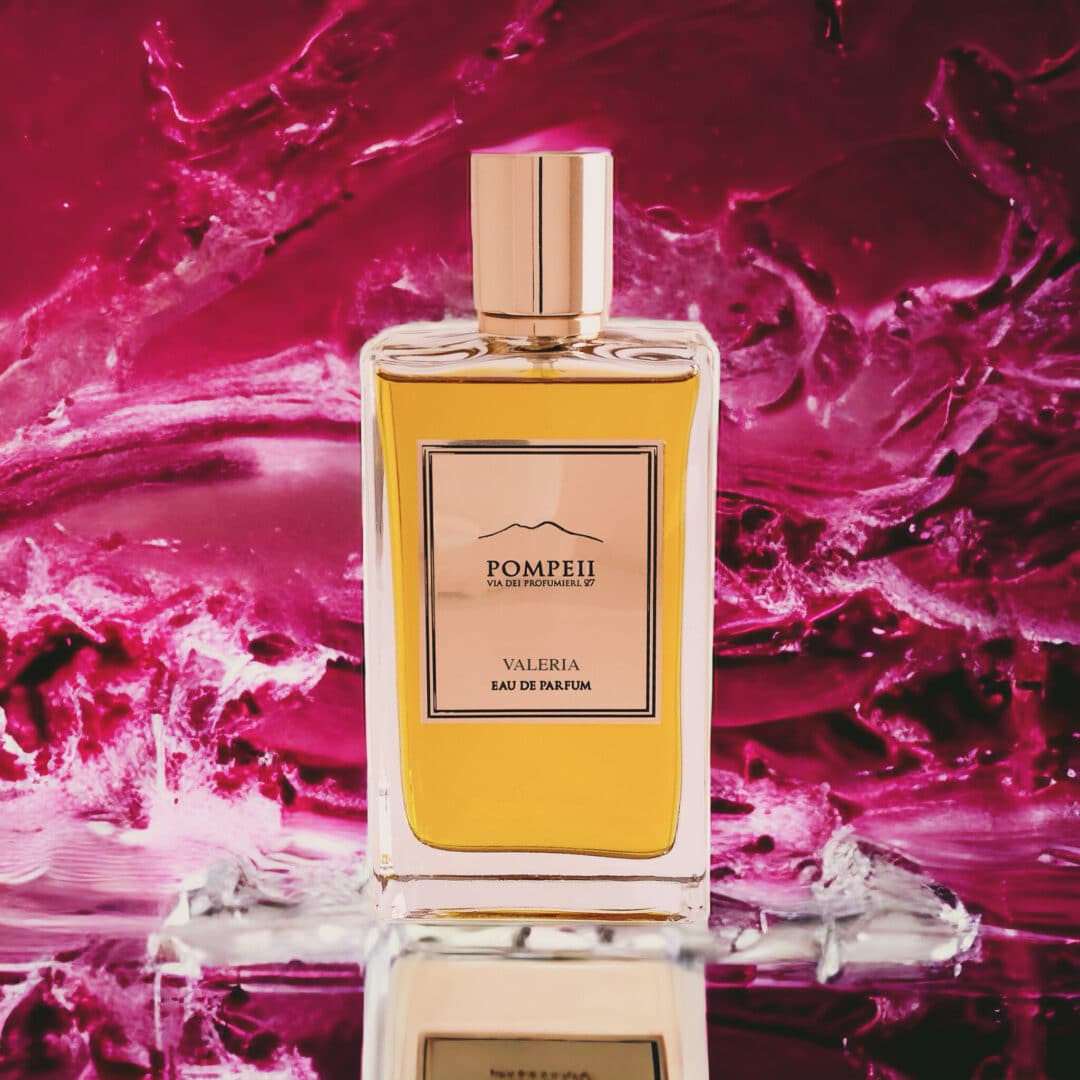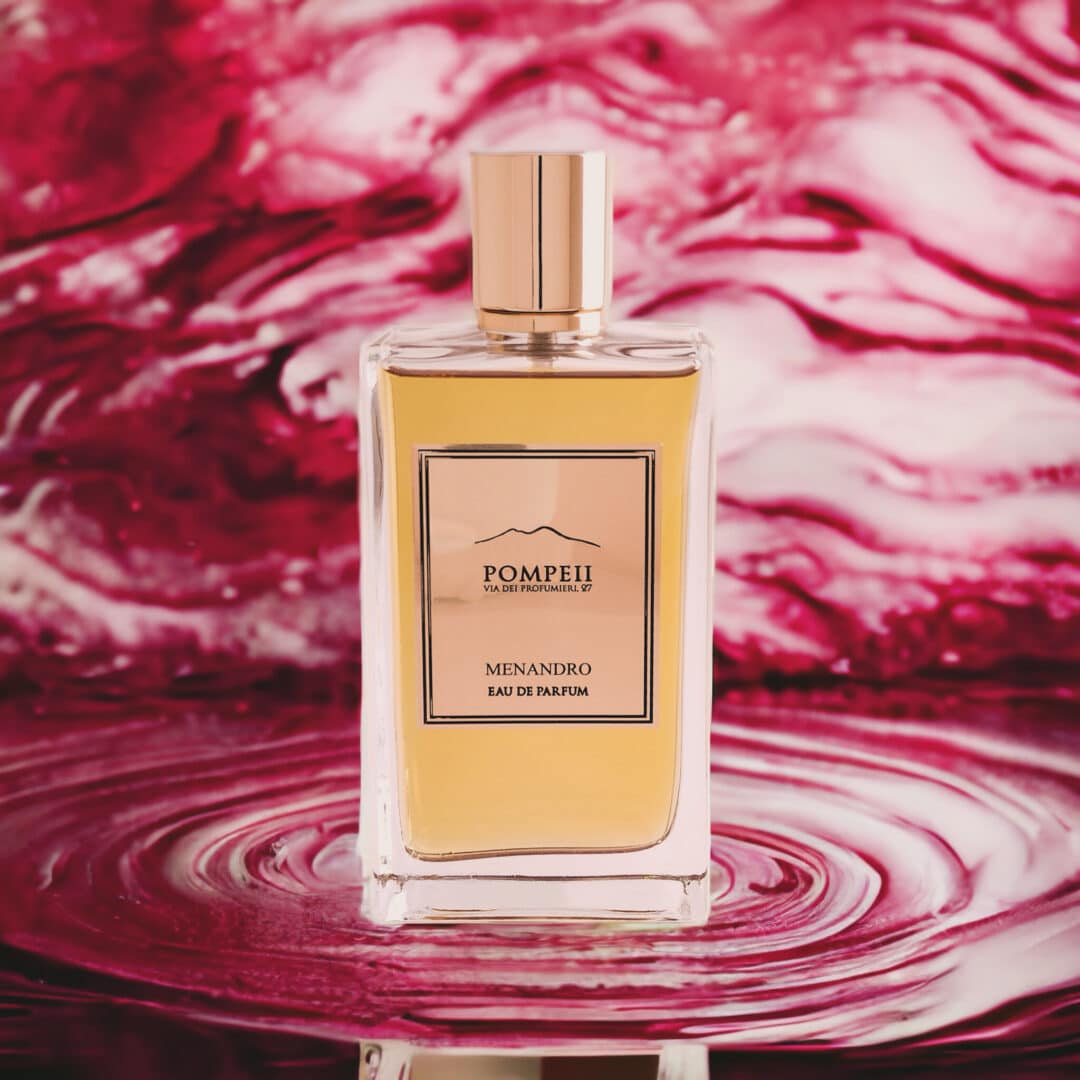The Italian niche fragrance label Pompeii takes us to the foot of Mount Vesuvius, to the famous city of the same name, which was completely buried by a volcanic eruption in 79 AD. Since the mid-18th century, Pompeii has been gradually excavated by archaeologists, who have unearthed numerous important finds and findings, such as numerous temples, houses, thermal baths, sports facilities and theaters, artistic frescoes and graffiti testify to a colorful and bustling city full of life, art and culture.

In 2011, experts were finally able to find the much sought-after Via dei Profumieri in the archaeological site of the city of Pompeii thanks to the traditions and clues from historical sources. The Via degli Augustali connects the Via Stabiana with the Via del Foro. Three stores with the numbers 26, 27 and 28 were found along this street where perfumes were produced. The perfumers met in a guild located not far from Via degli Augustali on the upper floor of the Macellum (market hall). The spices imported by Roman sailors from the ports of Pozzuoli and Ostia in the eastern provinces were used to make perfumed ointments, which were sold in small glass bottles and terracotta or alabaster containers.
The brand’s collection comprises six eaux de parfum, about which I unfortunately find very little background information, which is why the general section on Pompeii is mainly limited to the above-mentioned press release. The fragrances are inspired by people, special houses or simply by the city itself and thus bear witness to a bygone era.
Valeria – The dubious empress
The fragrance Valeria is dedicated to Valeria Messalina, the wife of Emperor Claudius, who is not necessarily associated with positive qualities. Valeria is described in lore as greedy, unscrupulous, scheming, manipulative and man-hungry. I cannot say how much of this is true. However, in Roman times people seem to have resorted to rigorous methods more quickly than is the case today, which is why nothing can be ruled out with regard to Valeria. The Pompeii fragrance house took a much more positive view of the woman, who died 30 years before the catastrophic eruption of Mount Vesuvius and had no closer connection to the city of Pompeii, and combined the ingredients in the eau de parfum created for her Davana, damask rose, rose, violet, ambergris, musk and Patchouli.

Bright, airy and radiant, Valeria opens with a lush rose fragrance, accompanied by powdery violet and liqueur-sweet davana. It is not a carefree rose-in-the-morning dew fragrance, not a youthful and cheerful rose alliance, but a thoroughly sophisticated and grown-up rose, a femme fatale who is aware of her radiance and expressiveness. Gradually, the warm, smooth, creamy notes of ambergris and earthy, woody patchouli emerge and the creation gradually fades away.
Valeria is a classic, elegant and sumptuous blend of rose and patchouli with a powdery, creamy and warm finish and a certain vintage character. Perfect for all fans of nostalgic rose fragrances with good presence and longevity that can be worn throughout the seasons. Personally, I wouldn’t wear Valeria to the office, probably not even in everyday life, but rather for special occasions or in the evening.
Menandro – Pompeii
Menandro is dedicated to the so-called House of Menander, which was excavated in Pompeii at the beginning of the 20th century. The property, which once belonged to a wealthy family, is decorated with numerous magnificent murals that make this building a special highlight within the excavation site. Various murals depict the famous Greek comic poet Menander, who gave his name to the stately house complex covering over 2000 square meters. The owner of the House of Menander was apparently Quintus Poppaeus, who belonged to a respected Roman family and probably even had family connections to Emperor Nero. The fragrance of this unique archaeological treasure combines the ingredients orange, cardamom, clove, saffron, ginger, ambergris, geranium, rose, cedarwood, musk, animal notes, patchouli and sandalwood.

Lively, fresh citrus fruits meet lush spices, sumptuous flowers and smoky-animalic accents in the opening of Menandro, making the creation expressive, opulent and sophisticated from the very first sniff. There is a touch of glamor and nostalgia in the air. Menandro is powerful and quite present. I clearly perceive the saffron, while the citrus freshness of the opening slowly fades. Rose and geranium provide a certain lightness and coolness, while patchouli and sandalwood underline the earthy, smoky and warm balsamic nuances of the animal notes. Gradually, a subtle sweetness permeates the composition, skilfully rounding off the fragrance.
Menandro is a powerful and present mix of spices, hesperides, flowers and woods, with a good dose of animalism. More of a fragrance for the evening or special occasions than for the office and everyday life, but can be used all year round. The composition is very classical, elegant and majestic, in keeping with the inspiring subject, the stately villa complex in the heart of Pompeii, which was certainly unparalleled in its splendor and opulence.

Be First to Comment